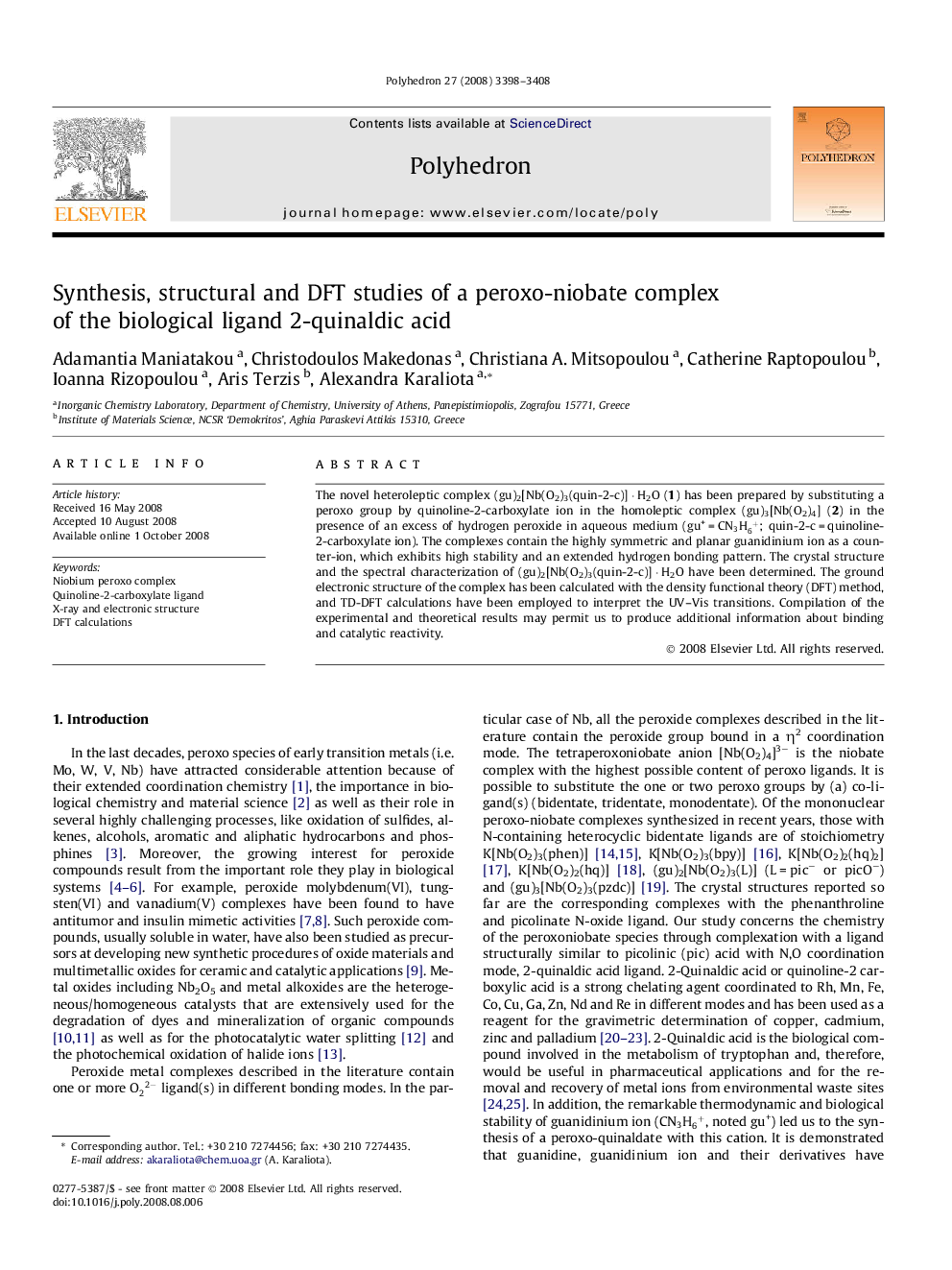| Article ID | Journal | Published Year | Pages | File Type |
|---|---|---|---|---|
| 1335325 | Polyhedron | 2008 | 11 Pages |
The novel heteroleptic complex (gu)2[Nb(O2)3(quin-2-c)] · H2O (1) has been prepared by substituting a peroxo group by quinoline-2-carboxylate ion in the homoleptic complex (gu)3[Nb(O2)4] (2) in the presence of an excess of hydrogen peroxide in aqueous medium (gu+ = CN3H6+; quin-2-c = quinoline-2-carboxylate ion). The complexes contain the highly symmetric and planar guanidinium ion as a counter-ion, which exhibits high stability and an extended hydrogen bonding pattern. The crystal structure and the spectral characterization of (gu)2[Nb(O2)3(quin-2-c)] · H2O have been determined. The ground electronic structure of the complex has been calculated with the density functional theory (DFT) method, and TD-DFT calculations have been employed to interpret the UV–Vis transitions. Compilation of the experimental and theoretical results may permit us to produce additional information about binding and catalytic reactivity.
Graphical abstractThe (gu)2[Nb(O2)3(quin-2-c)] · H2O complex has been obtained in reaction of (gu)3[Nb(O2)4] with quinoline-2-carboxylate ion in the presence of an excess of hydrogen peroxide in aqueous medium. The crystal structure and the spectral characterization of the novel complex have been determined. The molecular orbital diagram of the triperoxo compound has been calculated with the density functional theory (DFT) method.Figure optionsDownload full-size imageDownload as PowerPoint slide
